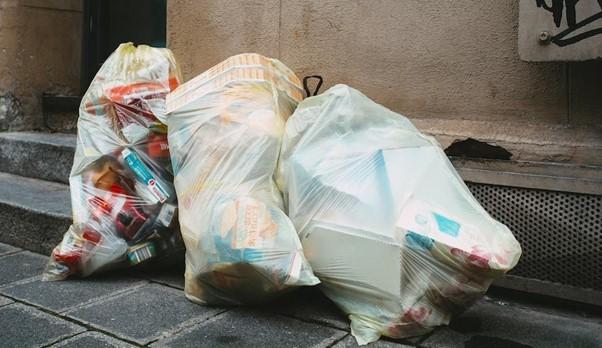5 Year Project for Reducing Plastic Pollution
In April 2022, Durban suffered the most catastrophic flood since 1856. Afterwards, residents spent weeks cleaning up the beaches. The heavy rains had washed up a mountain of garbage from inland and off-shore, highlighting the severe litter problem plaguing our nation.
According to a study[1] conducted by the IUCN, South Africa sends more plastic pollution into the ocean than Mozambique, Kenya, and Tanzania combined. The study found that most of this pollution comes from plastic bottles (PET) and bags (LDPE), showing us that recycling and anti-litter campaigns are not always effective.
Now, the Global Environment Facility (GEF) wants to help us tackle the problem from a different angle. In partnership with UNIDO and the WWF, the organisation has launched a five-year project in South Africa to develop more eco-friendly solutions for food and drinks packaging.
Treating the Root Cause of the Problem
Most of the time, anti-pollution projects focus on cleaning up litter after it has already become a problem. Even the most pro-active campaigns tend to fixate on the final stages of plastic’s journey, such as landfilling, recycling, or incineration. Very few deal higher up the value chain, ie: the stages where plastic packaging is designed and manufactured.
The GEF’s plastic pollution project aims to change that. The five-year project in South Africa forms part of a larger program involving 15 developing countries. This program is about finding circular solutions to plastic pollution rather than one-dimensional fixes.
What does that mean? A complete system overhaul that drastically changes how plastic packaging is made and consumed. It means fighting plastic pollution at its true source. Achieving this ambitious goal will take collaboration between private companies, industry bodies, and the government.
The project is currently in the planning stages, but the GEF hopes to launch it fully in 2025. Soon, we will see several positive changes in food and beverage packaging, for example:
- Eliminating single-use plastics – stopping manufacturers from putting throwaway items on the market to reduce the amount of plastic ending up in rivers and oceans. This means finding eco-friendly alternatives to plastic straws, cutlery, lollipop sticks, earbuds, balloons, and food wrapping.
- Phasing out toxic chemicals – “chemicals of concern” are toxic ingredients in plastic that leak into the environment easily. The GEF project aims to find safe alternatives for these chemicals to help protect human health in South Africa.
- Introducing reusable packaging – making food packaging from more durable plastic so you can reuse or refill containers. The Ellen MacArthur Foundation encourages re-use before recycling as it is the most circular way to use natural resources.
- Using more recycled materials – making food and drinks packaging from recycled plastic wherever possible. This increases the demand for recycled plastics and makes recycling more economically viable.
What Impact Could a Project Like This Have?
In 2022, the CSIR conducted a scientific analysis[2] to estimate how much plastic waste gets leaked into the environment in South Africa. The researchers used a method called the “Pathways Tool” to project plastic pollution figures for the future. They discovered that without any environmental interventions, plastic pollution in our country will likely double from 2020 to 2040.
Then, they studied the effects of EPR. If we meet the recycling targets set out in the extended producer responsibility laws, South Africa will be able to reduce plastic pollution by 33%. Unfortunately, this is not enough. When you consider that we use more and more plastic every year, meeting EPR goals will only stabilise pollution at its current level.
Finally, the CSIR team studied what would happen if we made a total system change, such as the one proposed by the GEF’s five-year project. The results by 2040 could be extraordinary:
- Reduce plastic pollution by 63%
- Reduce greenhouse gases by 37%
- Reduce investment requirements by 67%
- Increase job opportunities by 3%
Protecting Jobs in the Plastics Industry
Despite the pollution plastic can cause, it also creates millions of jobs. Many people are worried that changing the plastic industry too much could have negative side effects for the economy. Thankfully, protecting livelihoods is part of the GEF’s five-year project for South Africa.
Last year, the WWF commissioned a scientific report that looks at the socio-economic impacts of eliminating certain plastics from our economy. The report found that gradually phasing out plastic fruit/bread bags, lollipop sticks, takeaway containers, sauce sachets, single-use cutlery, and plastic-stemmed cotton buds would actually have a positive effect on the economy.
Phasing these products out by 2030 would force us to innovate and find replacements, increasing South Africa’s real GDP by 3%. This strategy could also increase employment by 5% and boost wages by 10%. The study also found that none of these products are currently collected by waste pickers, so their livelihoods would be protected.
The Future is Looking Good
All the research seems to say the same thing: ending plastic pollution will be a combined effort. It’s a complex problem that affects not only the environment, but the economy, human health, and the very ways we live our lives. The Global Environment Fund, WWF, and UNIDO understand this complexity and have proposed a five-year project with collaboration in mind.
As the research shows, extended producer responsibility is not the be-all-and-end-all, but at least it brings the private sector to the table. Almost all businesses are affected by plastic regulations, and this project allows them to get involved in decision-making. By working together, we can make clean parks, beaches, rivers, and oceans a reality while growing the economy and creating jobs.
Join a producer responsibility organisation today – chat with us for more information.
SOURCES:
- https://iucn.org/sites/default/files/2022-09/plastic-pollution-regional-hotspotting-report-from-eastern-and-southern-africa-mediterranean-and-southeast-asia.pdf
- https://www.csir.co.za/sites/default/files/Documents/Reducing%20Plastic%20Pollution%20A%20Comprehensive%20Evidence-Based%20Strategy.pdf
- https://www.thegef.org/sites/default/files/documents/2022-10/GEF_IP_PlasticPollution_2022_10_12_0.pdf
- https://www.csir.co.za/project-funded-global-environment-facility-gef-implement-and-scale-circular-solutions-plastic
- https://www.engineeringnews.co.za/article/csir-researchers-develop-plastic-pollution-tools-policy-considerations-for-south-africa-2024-08-16
- https://www.wits.ac.za/news/latest-news/general-news/2023/2023-04/the-2022-durban-floods-were-the-most-catastrophic-yet-recorded-in-kwazulu-natal.html
- https://www.dailymaverick.co.za/article/2022-06-14-huge-volume-of-plastic-flood-debris-trapped-inshore-by-agulhas-current/
- https://www.unep.org/resources/report/chemicals-plastics-technical-report
- https://wwfafrica.awsassets.panda.org/downloads/wwf-plastic-phase_out-factsheet-7nov.pdf
[1] https://iucn.org/sites/default/files/2022-09/plastic-pollution-regional-hotspotting-report-from-eastern-and-southern-africa-mediterranean-and-southeast-asia.pdf


